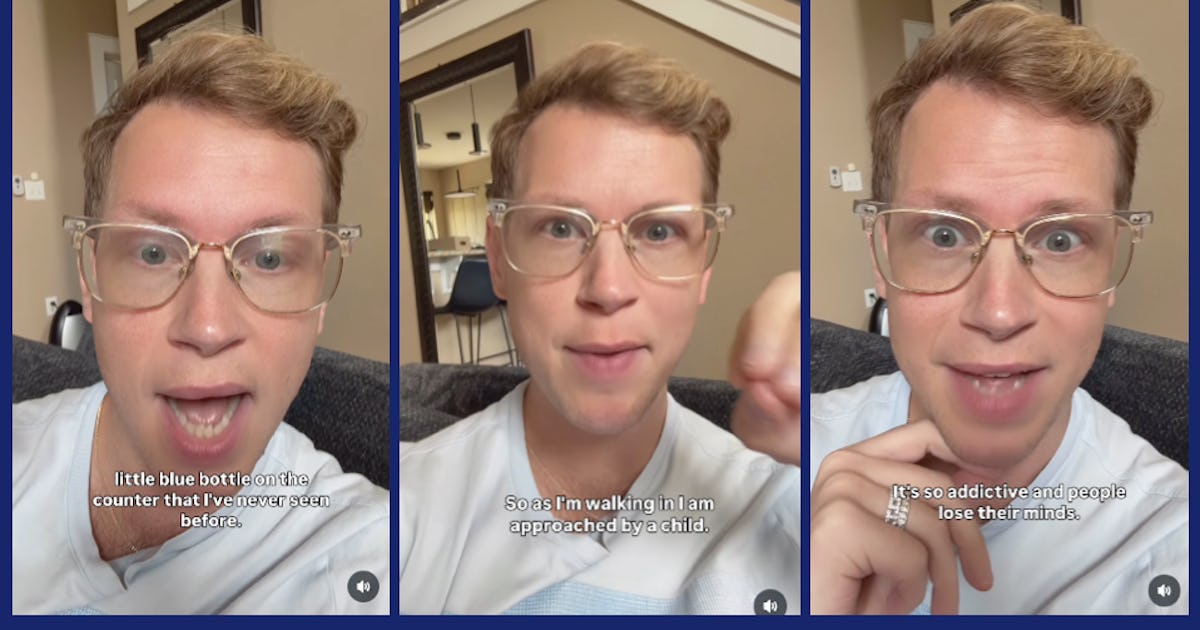
If you’ve never heard of kratom or kava before, you’re not alone. Until @yourbestiemisha’s video about a drink made with these extracts went viral, I’d venture to say most parents hadn’t. And it isn’t just beverages you should be aware of — there are also tablets, chewables, and more made with kratom or kava. This week, though, kratom drinks specifically seem to be all over national news, as more and more people become aware that these products are readily available in gas stations… and falling into the hands of teens, who, true to form, seem to have been aware these products existed long before we did.
What are kratom and kava drinks?
In that now-viral video, Michael Brown (@yourbestiemisha) describes an incident involving a child he estimated to be 14 approaching him outside a gas station, asking Brown to buy him something called Feel Free, and even trying to grab his wallet. When Brown went to check out inside, he warned the cashier about the person outside. The cashier in Brown’s video then pointed out small blue bottles near the register, describing the product as “so addictive” and saying she has seen customers return five or six times a day to repurchase them.
As you may have guessed, the drink the teen tried to get Brown to buy is a tonic made with kava and kratom. To purchase it, you must be at least 21 years of age. So, it tracks that a kid would need to ask someone like Brown to grab them one at checkout — and there’s a good reason they’re not intended to be accessible to kids.
Comments on Brown’s video suggest that kratom and kava drinks are a major problem all over the country. “I am a store manager and we decided to not carry it any more because of this right here,” says one user. “Have had patients with seizures bc of this and also babies experiencing withdrawal from maternal use during pregnancy. It’s no joke,” @pedsbraindoc commented. And one comment that should concern parents: “The worst part is that for a good while they were not age restricted, meaning lots of teenagers or even children were able to purchase them up until recently.”
If this is your first time hearing any of these words, here’s a primer:
- Kratom: Derived from a tree native to Southeast Asia, this herbal extract is “supplement that is sold as an energy booster, mood lifter, pain reliever and remedy for the symptoms of quitting opioids,” according to Mayo Clinic. Poison control centers in the U.S. received more than 3,400 reports about the use of kratom from 2014 through 2019, per the same Mayo Clinic resource, and some of those users died. Others experienced a range of side effects, from vomiting and muscle pain to delusions and seizures. The DEA currently labels it as a drug of concern.
- Kava: A depressant derived from a certain type of pepper plant. Kava is a part of many cultures’ traditional rites and ceremonies, but is also used today in products like this to promote feelings of happiness and relaxation.
What’s dangerous about kratom and kava products?
For starters, they’re not regulated by the FDA, which means they haven’t gone through the same rigorous safety testing as, say, the Tums or Advil caplets sold next to them at the gas station checkout. This means we don’t fully understand the health risks of consuming these products, nor do we know what dosage would be safe to take.
They can also be addictive. “The use of these products could be really concerning for everyone, but [particularly] teens because of the social media influences,” says Dr. Anthony Jaworski, clinical program manager for the Poison Control Center at Children’s Hospital of Philadelphia. “Habitual use of kratom could lead to things such as dependency because we know that the chemicals found in kratom act a lot like opioids, like morphine, and that is, of course, a particular concern because if you develop dependency on something like kratom, you can develop an addiction disorder or withdrawal syndrome.”
Kratom can affect the body similarly to opioids, to the point that there have been cases where people attempt to treat those who have taken kratom with Narcan, Jaworski says. Kratom has also been known to cause liver damage, which is also a “big concern” with kava products, Jaworski says. Using kava habitually can cause a characteristic rash, he adds, as well as noticeable weight loss.
“I would be concerned about a 14-year-old who were to be taking these products, developing either a liver injury, because that has been reported in someone that young before, but also with something like kratom, developing a substance use disorder,” he says.
A recent FDA news release drew attention to 7-OH, a concentrated kratom byproduct, by recommending it be classified as a controlled substance. The FDA says 7-OH, shorthand for 7-Hydroxymitragynine, “is increasingly recognized as having potential for abuse because of its ability to bind to opioid receptors.” Jaworski says 7-OH is roughly 10 times stronger than standard kratom, “which puts kids and everyone really at even more risk.” Much like the fruit-flavored vape cartridges, the fact that 7-OH tablets come in bright colors and fruity flavors can make them more appealing to kids.
How should I talk to my teens about kratom?
In a market where products like kratom drinks, 7-OH tablets, or Zyn are hitting our teens’ algorithms faster than we can keep up with, it matters that we instill some healthy skepticism of new products in general in our kids.
“First and foremost, wherever we can as parents, we should try to maintain awareness of what is happening. One big example is as you walk down the street — I live in Philadelphia, so I just walked down South Street — and I see vape shops that have big signs that say in neon green ‘kratom’ or ‘Delta-8.’ As a parent, I should probably be thinking, ‘If I can easily see this and walk in and purchase this product, there’s a very good likelihood that a teenager might be able to do the same thing,’” Jaworksi says.
We should also preach that just because products are sold in stores doesn’t mean they’re safe, he adds. “Especially if you get stuff from gas stations and vape shops, because in this day and age we have many unregulated products out there that pose risks to everyone, especially our teens.”
The most impactful thing any parent can do for their teens is be a good role model when it comes to substances, Jaworski says: “So avoiding smoking, using any sort of substances — whether they’re street drugs or pharmaceuticals — to get high or to make yourself feel better. You definitely don’t want to do this in front of teens or children, for sure, especially when caring for them. And if you do drink alcohol, do that responsibly and in moderation.”
Disclaimer: This content was automatically imported from a third-party source via RSS feed. The original source is: https://www.scarymommy.com/lifestyle/kratom-kava-drinks-should-concern-you-if-you-have-teens. xn--babytilbehr-pgb.com does not claim ownership of this content. All rights remain with the original publisher.






